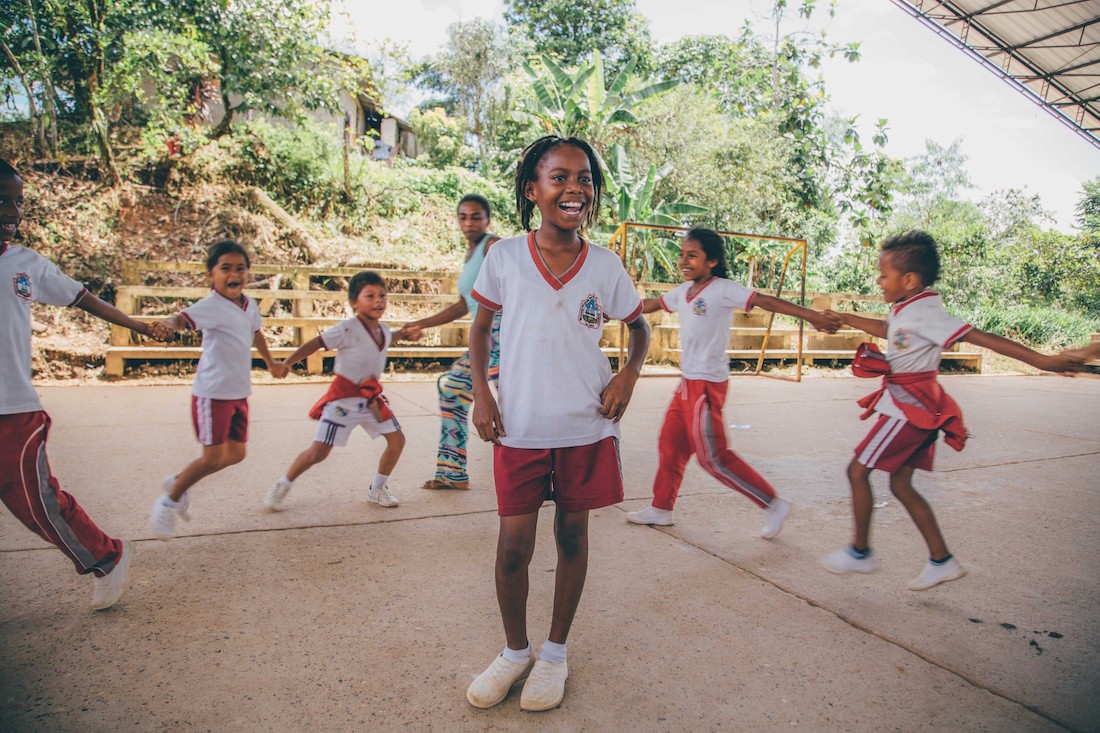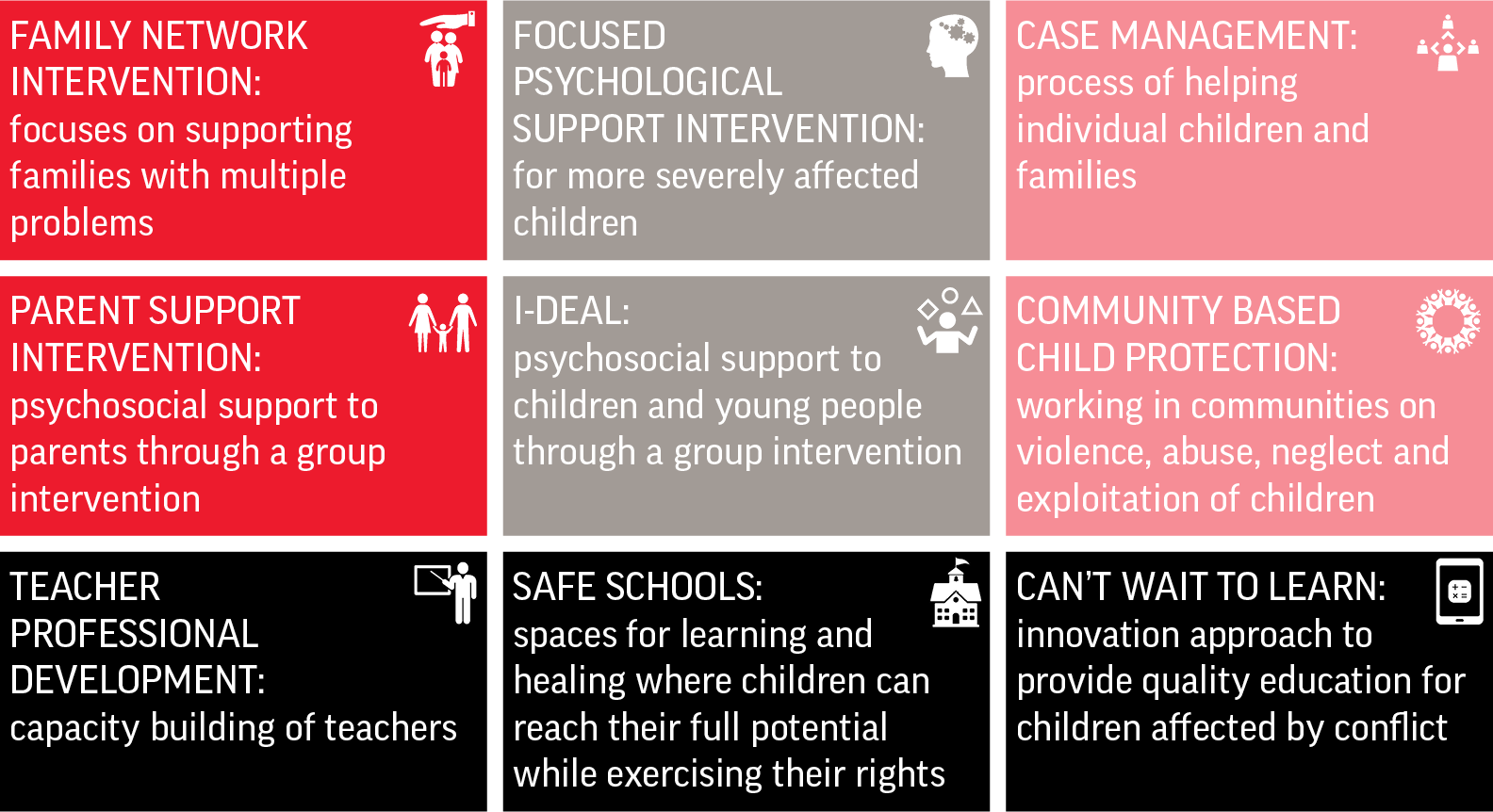CARE SYSTEM
The strategy and research agenda of War Child is geared towards creating a multi-level care system that will include evidence-based interventions, alongside methods to improve access, acceptability and quality. War Child believes that service delivery can best be done through a care system approach that addresses both individual needs and broader community needs, in which different interventions are interconnected and respond to the different needs of children. The development and delivery of a set of ‘Core Interventions’ will form the basis of this care system - and therefore our work - in conflict-affected countries in the years to 2020.
The Core Interventions comprise nine contextualized interventions which will form a wide-ranging care package in which protection, psychosocial support and education are combined. The majority of these interventions will support children, families, schools and communities at a basic service level and will be helpful to all children and community members afflicted by conflict by providing structure, quality and consistency. Three interventions are specifically being developed for children or families that show more severe symptoms of distress and who require more focused support.

Creative-expressive means, such as local songs and music, dance and movements, drama exercises and games are commonly part of the War Child interventions and activities that are being implemented or developed.
By 2020 four evidence-based Core Interventions will be fully operational. The remainder will be at one of the four stages of development and evaluation outlined in the diagram below. This structure is indicative of our move towards delivering evidence-based interventions.
These interventions are being researched and developed to ensure the highest standards of quality and will all be subject to rigorous scientific evaluations. The interventions are accompanied by trajectories that will strengthen the quality and implementation of the Care System. These trajectories will, for example, facilitate the safe identification of children and families in need of higher-level interventions and support recognition and training on the required competences of a service deliverer to work with all children. Furthermore, an important area of focus is to tackle exclusion within the communities.

The Care System will allow us to choose the approach that best suits the specific needs of children in a variety of contexts inside our countries of operation. This model allows for effective intervention inside conflict-affected communities. We work within the three following areas: